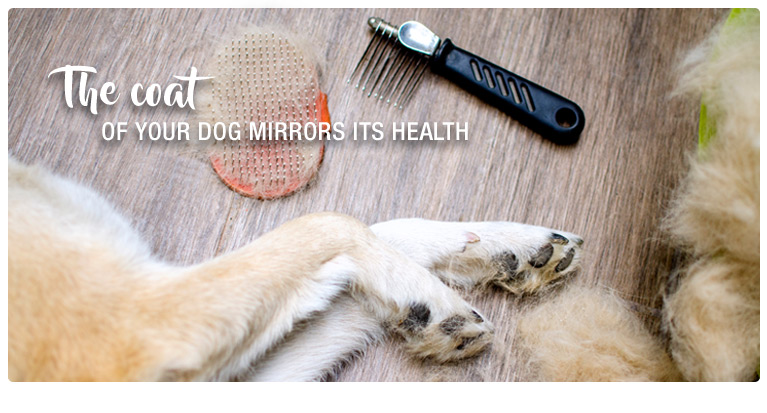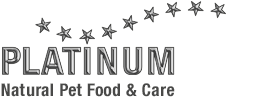
The coat of your dog mirrors its health
The state of dog’s health is shown very well by its coat. Minor illnesses or inappropriate nourishment can easily lead to a change of the coat. It’s getting dull, without shine, and can result in loss of hair when changing coat. As skin and coat react very quickly to diseases and failures in nourishment, the general state of dog’s health can easily be recognized. That allows you to react in time.
Change of coat
The change of coat is a seasonal cycle and has its peak in spring and autumn. The change of coat should protect the animals from the cold in wintertime and the heat in summer. The replacement of the hair takes around 4 to 6 weeks. This demands a lot from metabolism and therefore nutritional deficits occur particularly during this period.
Today dogs are mostly kept inside the house and therefore and also due to artificial light and other external factors the cycle of changing the coat can be disordered or completely omitted. Instead the dog is changing its coat throughout the whole year.
Sebum production keeps the hair alive
Hair as well as claws is specified as skin appendages. The organism supports every body organ; in the case of hair not through blood but with sebum. Secretions of sebaceous glands are responsible for vitality, shine and lifespan of the hair. They produce a greasy, mineral-rich sebum which is given to the hair when growing out of the root sheath. After that it is up to the dog to take care of its coat, which includes spreading the sebum.
With muscles at the end of the root sheath dogs are able to erect or lay back the hair. This is important, not only for the protection against cold, but also for communication (such as bristle the hair of the neck). The root sheath and the surrounding skin are filled with nerves and through special tactile cells even the smoothest touch of the hairs and their position is forwarded to the nervous system.
Hair is an important and essential part of the organism with many functions. Growth of hair and the production of sebum depend on the hormone system and an adequate supply of minerals, vitamins, proteins and fatty acids. That is why the coat of your dog is said to be the mirror its health.
Change of the hair caused by illness or nourishment:
- Easy brittleness
- Dull, not shiny hair
- Greasy and oily hair
- Increasing loss of hair outside the normal seasons
- No solid halt of hair or tuft of hairs
These symptoms could occur together with changed skin (scales, redness) and other things as bad body odour, itching, frequently licking of particular part of the skin. Despite those numerous but unspecific factors a clear diagnosing of illness is not possible.
High valuable nutrition supports the coat
The correlation of appropriate and high valuable nourishment and the condition of the coat is already examined in several scientific studies. The result: it is absolutely possible to attain a better condition of the coat through the feeding of a high quality full nutrition, just after a short time with nearly all examined animals. This is visible through shininess and the right fat content.
A healthy and strong coat should be mandatory for every dog. It is not just an evidence for the healthiness of the dog but also for a good care and the right nourishment. If your dog is physically healthy despite a bad condition of the coat, the nutrition should be changed - respectively failures or lacks in nourishment should be eliminated. Appropriate nourishment should be also subsidized by regularly and thoroughly care of the coat.
Hints for a healthy coat
- Feed an appropriate and high quality dog food.
- If you have to bathe your dog take a special gentle shampoo for dogs to avoid that the skin dries out.
- Problems and illnesses of skin caused by elflock can be prevented by regular brushing of your dog.
- The coat should be checked regularly to burrs, ticks and other vermin. Please also look at injuries or rashes of the skin.
- Keep your dog free of parasites like mites and fleas.
- It is recommendable to remove harnesses and collars inside the house to avoid split of the hair at that areas.
- In cold seasons take care that the indoor air humidity is not too low (the optimum is between 40 and 60 %) and it is not superheated. This unnecessary dries out the skin.
- In case dog clothes are used, take care to a good fit and a gentle material.
- Don’t allow the claws to grow too long, shorten them with a special pair of scissors.














































